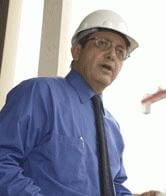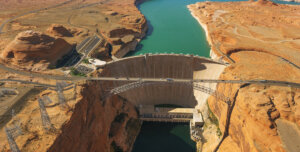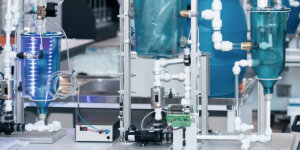A “Concurrent Water Collection” process developed by a longtime ISI researcher may help prolong well life, and increase production
CWC addresses the perennial and difficult problem of water accumulation that slows and finally cripples low-pressure gas wells.Water is usually part of gas production. At first natural gas pressure pushes out the water drops, but, according to Professor Bekhrokh Khoshnevis of the USC Daniel Epstein Department of Industrial and System Engineering, “as the production of the well continues, the reservoir pressure drops over the years, to the point where water can no longer be lifted to the surface by gas flow.”
This results, Khoshnevis continues, “in the accumulation of water in the bottom of the wellbore, sometimes reaching a height of several thousand feet.”

Behrokh Khoshnevis
Several technologies, including plunger lift, automatic casing swab, rod pumps, soap sticks, or velocity strings, have been used in the past to overcome the problem of “liquid loading.”
Each has drawbacks. Rod pumps can be expensive to operate. Gas lift wastes gas. Swabbing can also be costly and production can cease when wells are not effectively swabbed.
Industry has long looked for better ways to address the issue. The solution Khoshnevis hit upon was capturing water at relatively high well elevations rather than letting it go down to the well bottom.
“The system,” he explained in a written exposition, “operates by means of two types of modules: a) a single Collection module which at 3000 feet accumulates the water flowing down from the tubing segment above, and b) a series of Water Push-Up modules which pass the accumulated water upward from one to another.
The CWC system modules, according to the researcher, have a small number of moving parts, all operating with the natural pressure of the gas, and hence do not need external power. They operate automatically, and are expected to need minimal maintenance.
The CWC concept was first validated by computer simulations which were followed by the construction and testing of several scaled physical prototypes.
The new method has potential to significantly improve the overall production throughput over the lives of wells. The amount of the production increase would depend on the condition of candidate wells. The lower the well pressure, the more significant the comparative impact of the new method will be, Khoshnevis says.
In the extreme case some gas wells which were abandoned because of low pressure may be brought back to life using the CWC technology.
Khoshnevis, whose specialty is new manufacturing processes, began studying the problem at the Center for Interactive Smart Oilfield Technologies, a joint venture between the Viterbi School and Chevron Inc., which has since its establishment in 2003 brought together industry engineers with academics, often specialists in fields that have nothing to do with petroleum production.
Viterbi Engineering graduate students Mehdi Mojdeh, Jing Zhang, Reza Rastegar, Mahdi Yoozbashizadeh, and Kasra Zamani worked at various stages of this project.
Published on February 22nd, 2010
Last updated on August 5th, 2021











